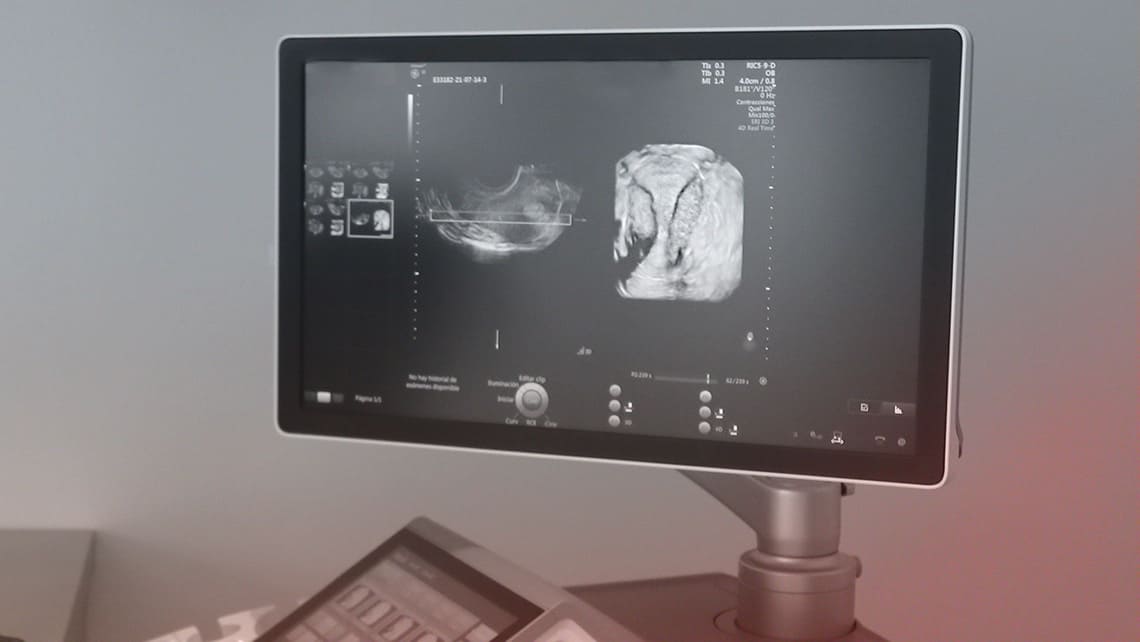
Endometrial hyperplasia; symptoms, diagnosis and treatment
Índice
What is Endometrial Hyperplasia?
Endometrial hyperplasia is nothing more than an excessive growth of endometrial cells, especially glandular cells, usually in response to excessive estrogen exposure and poor progesterone function.
This growth can be either controlled or uncontrolled, in such a way that the entire architecture of the endometrium can be compromised.
What types of Endometrial Hyperplasia are there?
- Non-atypical / benign endometrial hyperplasia: cellular clusters found, but without compromising normal endometrial tissue.
- Atypical endometrial hyperplasia: Cellular changes as well differences in the structure of the endometrium are observed, therefore, it is considered a precancerous lesion.
Its appearance is more frequent in patients with chronic anovulation, such as in patients with polycystic ovary syndrome, or in patients suffering from obesity, constituting both risk factors. Having a genetic condition (such as Lynch syndrome) that increases the risk of endometrial cancer is also a risk factor.
What are the main Endometrial Hyperplasia symptoms?
The most frequent symptom is dysfunctional uterine bleeding, although it can also be asymptomatic. It is rare to find in young patients, but when found, it obviously causes sterility from a non-functioning endometrium.
The diagnosis is devastating if it is made during the sterility study, especially in patients with a diagnosis of atypical endometrial hyperplasia.
How is Endometrial Hyperplasia diagnosed?
Is the endometrium analysis what allow us diagnose and distinguish the different types of hyperplasia.
We have to mention that the endometrial hyperplasia diagnosis is done by the endometrial histopathological analysis. Consequently, we need to perform an endometrial biopsy. This way, the endometrial biopsy can be done “blindfolded” or directed. The blindfolded procedure is done introducing a cannula into the cervix to obtain the endometrial sample. However, hysteroscopy, which explores the cervix introducing a camera or hysteroscope, will allow us obtain an endometrial sample in a directed way.
Which is the Endometrial Hyperplasia treatment?
In this situation, decisions must be made according to the diagnosis. In benign endometrial hyperplasia, hyperstrogenism will need to be corrected before targeted therapy is performed. Obese patients will be instructed to lose weight, and ovulatory cycleswill be induced in patients with polycystic ovary syndrome. After that, the correction of benign hyperplasia can be done either conservatively with no more than a mere close control of the symptoms or it can be treated with progestins for 3 to 6 months, being its prognosis very favorable.
However, endometrial hyperplasia with atypia does pose a risk to the patient as it is a precancerous lesion. The ideal treatment would be hysterectomy. However, for young patients who want to preserve their fertility and do not accept surgery, as well as meeting special conditions (young people, regular menstrual cycles, no need for estrogen treatment for pregnancy, and no other risk factors, neither clinical nor genetic, for endometrial cancer) conservative treatment with progestins can be followed for 6 months. This requires performing endometrial biopsies every 3 months, and reconsidering surgery if at 12 months there has been no cure. These patients have a poor reproductive prognosis depending on the extent of the injury.
Can Endometrial Hyperplasia be avoided or prevented?
Although Endometrial Hyperplasia cannot be completely avoided, it’s been closely related to obesity. The subcutaneous cellular tissue, typical of patients with a high body mass index, makes the estrogens endogen production increase, which is considered as a risk factor to develop the disease.
Therefore, all patients suffering benign endometrial hyperplasia will advised to modify the lifestyle and the loss of weight.
IT MAY ALSO BE OF INTEREST TO YOU
- Obesity-Induced Infertility Unit
- Implantation failure and recurrent miscarriage Unit
- In Vitro Fertilization (IVF)
- Fertility Assessment
DrBelén Moliner, gynaecologist at Instituto Bernabeu.
